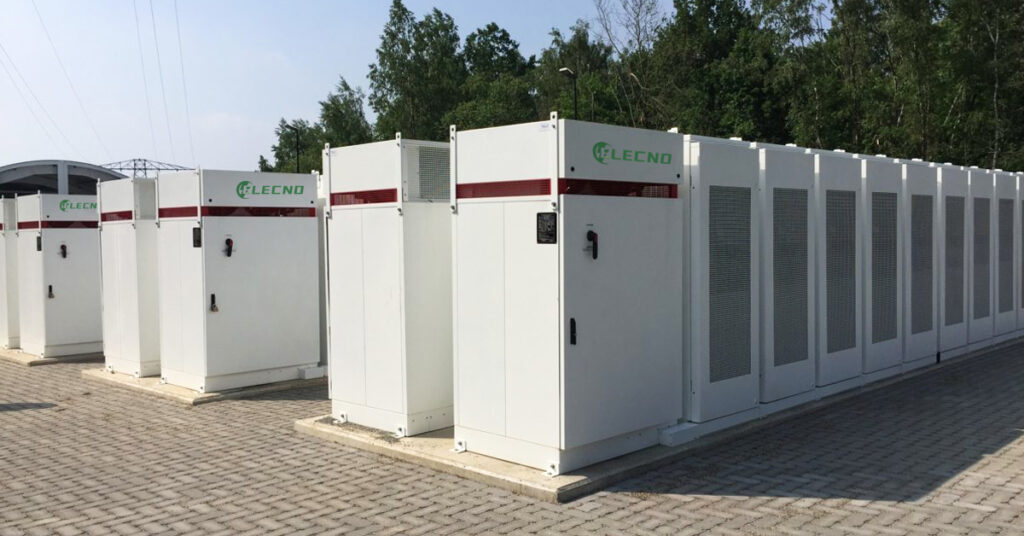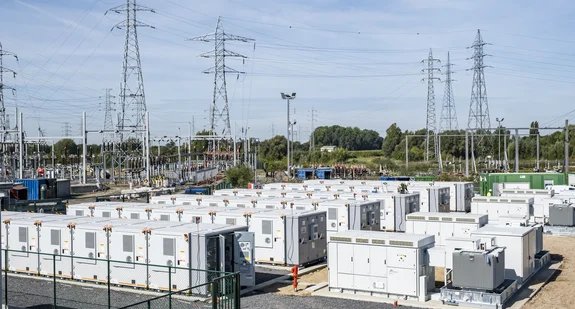Industrial Energy Storage Systems: Key Benefits and Solutions
Introduction to Industrial Energy Storage Systems
Industrial energy storage systems are crucial for efficiently managing energy consumption in manufacturing, commercial, and industrial sectors. These systems store excess energy during off-peak periods and release it during peak demand, stabilizing the grid, reducing costs, and supporting sustainability goals. As industries seek to reduce operational costs and improve energy resilience, energy storage solutions are becoming increasingly important.
Why Industrial Energy Storage Matters
Energy storage systems are designed to enhance the efficiency of industrial operations by providing a reliable power supply during high-demand periods. They play a vital role in:
- Energy cost reduction: Storing energy when prices are low and using it when prices are higher reduces electricity bills.
- Grid stability: By balancing supply and demand, they help reduce pressure on the grid and prevent blackouts.
- Renewable energy integration: Storing excess energy from renewable sources, such as solar and wind, supports sustainable power usage.
- Backup power: Energy storage ensures that industries have a reliable backup during power outages or disruptions.

Types of Industrial Energy Storage Systems
Several types of energy storage systems are available for industrial use, each with unique benefits and applications:
1. Battery Energy Storage Systems (BESS)
BESS is the most commonly used energy storage solution in industrial settings. These systems use rechargeable batteries to store energy during off-peak times, which can then be released during peak demand. BESS is ideal for:
- Peak shaving
- Load shifting
- Grid stabilization
2. Flywheel Energy Storage Systems
Flywheels store energy in the form of rotational kinetic energy. These systems are known for their quick response times and high power, making them suitable for applications that require rapid bursts of energy.
3. Compressed Air Energy Storage (CAES)
CAES systems store energy by compressing air into underground reservoirs. When energy is needed, the compressed air is released and used to drive turbines to generate electricity. This system is ideal for large-scale storage in industries with access to suitable underground storage.
4. Pumped Hydro Storage
Pumped hydro storage uses surplus energy to pump water to a higher reservoir. When energy is required, the water is released to generate electricity. This is a widely used method for large-scale energy storage, particularly in areas with appropriate topography.
5. Thermal Energy Storage (TES)
TES systems store energy in the form of heat or cold, which can be used for industrial heating or cooling needs. TES helps industries reduce energy costs by storing energy when electricity rates are low and using it when rates are higher.

Benefits of Implementing Industrial Energy Storage
1. Cost Savings
By storing excess energy during off-peak hours, businesses can avoid high electricity costs during peak periods, significantly reducing operational expenses.
2. Energy Independence
Energy storage systems give industries greater control over their energy usage. By using stored energy, businesses reduce their reliance on the grid, helping to protect against price fluctuations and power outages.
3. Improved Grid Stability
Energy storage helps balance supply and demand, improving overall grid stability. By reducing peak demand, industrial storage systems prevent overloads and reduce the risk of blackouts.
4. Renewable Energy Integration
Energy storage systems facilitate the integration of renewable sources like solar and wind. By storing energy when production is high, businesses can use it during times of low generation, maximizing the value of renewable energy.
5. Backup Power
In case of power disruptions, energy storage systems provide an immediate backup, ensuring continuous operations and avoiding costly downtime.
6. Environmental Sustainability
Energy storage contributes to a reduction in reliance on fossil fuels, supporting businesses in meeting sustainability goals and reducing their carbon footprint.
Key Components of Industrial Energy Storage Systems
Industrial energy storage systems consist of several key components:
- Battery Storage: Lithium-ion batteries or flow batteries store the energy for later use.
- Inverters: Convert stored DC power into AC power for industrial equipment.
- Energy Management Systems (EMS): These systems control and optimize the charging and discharging of energy based on demand, cost, and grid conditions.
- Thermal Management Systems: These systems manage the temperature of the batteries to prevent overheating and ensure efficient performance.
Factors to Consider When Choosing an Industrial Energy Storage System
1. Capacity
The storage capacity, measured in kilowatt-hours (kWh) or megawatt-hours (MWh), should meet your energy needs without oversizing or undersizing the system.
2. Power Rating
The power rating, measured in kilowatts (kW) or megawatts (MW), should match the peak power demands of your industrial operations.
3. Scalability
Choose a system that can be easily expanded to accommodate future energy needs as your operations grow.
4. Technology
Consider the advantages of different storage technologies, such as lithium-ion batteries, flywheels, or pumped hydro systems. Each has different applications based on your specific energy storage requirements.
5. Integration
Ensure the storage system integrates seamlessly with existing infrastructure and renewable energy sources to maximize efficiency.
6. Safety and Reliability
Select systems with robust safety features and a proven track record to minimize the risk of downtime or safety issues.
Challenges and Limitations of Industrial Energy Storage
While industrial energy storage offers significant benefits, there are challenges to consider:
- High Initial Costs: Energy storage systems require a substantial upfront investment.
- Energy Losses: Some energy loss occurs during charging and discharging cycles, reducing overall efficiency.
- Limited Lifespan: Over time, energy storage systems degrade, necessitating replacements or expensive maintenance.
- Scalability and Integration: Some storage systems face limitations in size and integration with existing infrastructure.
Future Trends in Industrial Energy Storage
1. Lithium-Ion Batteries
Lithium-ion batteries are expected to remain dominant in industrial storage due to their high energy density, long lifespan, and fast charging capabilities.
2. Integration with Renewable Energy
As renewable energy continues to grow, industrial storage systems will play a crucial role in balancing supply and demand, ensuring the reliable use of solar and wind energy.
3. AI and Machine Learning
AI and machine learning are being integrated into energy storage systems to optimize performance, predict maintenance needs, and enhance system efficiency.
4. Expansion of Grid-Scale Storage
Grid-scale energy storage solutions will see an increase in deployment, supporting the stability and reliability of power grids.
Conclusion
Industrial energy storage systems are transforming how businesses manage energy usage. By integrating storage solutions into industrial operations, companies can lower costs, improve reliability, and contribute to a more sustainable energy future. As technology advances, industrial energy storage will continue to play a critical role in meeting the energy needs of modern industries.

